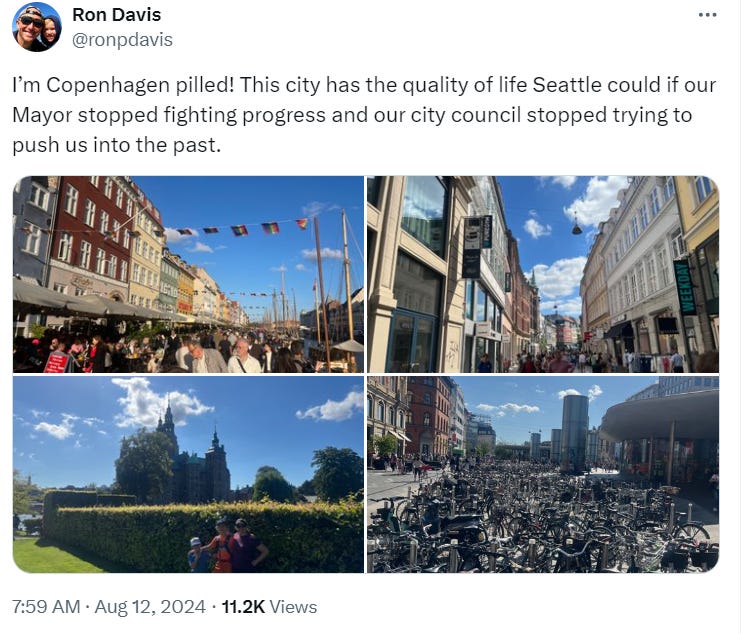My Trip To Copenhagen
We recently had the immense privilege of taking our kids to Europe for the first time, and it was a fantastic vacation, filled with adventures, lots of learning, and time connecting with loved ones who live abroad.
When we were in Copenhagen, I was struck by the lack of cars. There were days where we walked well over 40,000 steps (my little guys have great stamina!) and only crossed one large road, with a safe layover island in the middle.
This not only is much better for the climate, for air-quality and its impact on our health, for quality of life, and for the safety of my family while moving through a place jet-lagged and disoriented—it was also quiet!
Noise is irritating and too much of it is also bad for our health. It is also one of the primary irritants offered up by city life. But it is largely missing from the Copenhagen experience.
I crossed the canal to an actual car street and filmed for a few seconds. You hear one car, despite being amid thousands of people.
It’s SO nice.
Of course, that’s because the leadership of Copenhagen takes climate leadership seriously and has actively worked to the city a walker’s paradise.
Copenhageners have built some of the best biking infrastructure in the world, have set aside large areas for pedestrian-only streets, and have a subway and suburban rail network that make me envious (despite it serving a far smaller population). And they are always investing to improve.
As a result, only 26% of Copenhagener’s trips are by car, in their metro region. In the Seattle metro, where we have more money and more people, it’s a humiliating 80%. Even in Seattle proper, it’s still an astounding 65%.
Meanwhile, in Seattle, we have a Mayor that has tried at multiple future stations to kneecap the usefulness of our $54B investment in regional rail, to accommodate his favored lobbyists. His transportation proposal cut car transit investment and prioritized cars.
With a lot of pressure from activists, council reluctantly improved it slightly, but following transportation chair Rob Saka’s emphasis on “the basics,” still cut the construction-inflation-adjusted investment in transit by 36%. This despite a large spike in deaths on our roads, and an active climate crisis.
Ignoring life, death, air quality and the climate and calling it “getting back to the basics” is, well, weird.






